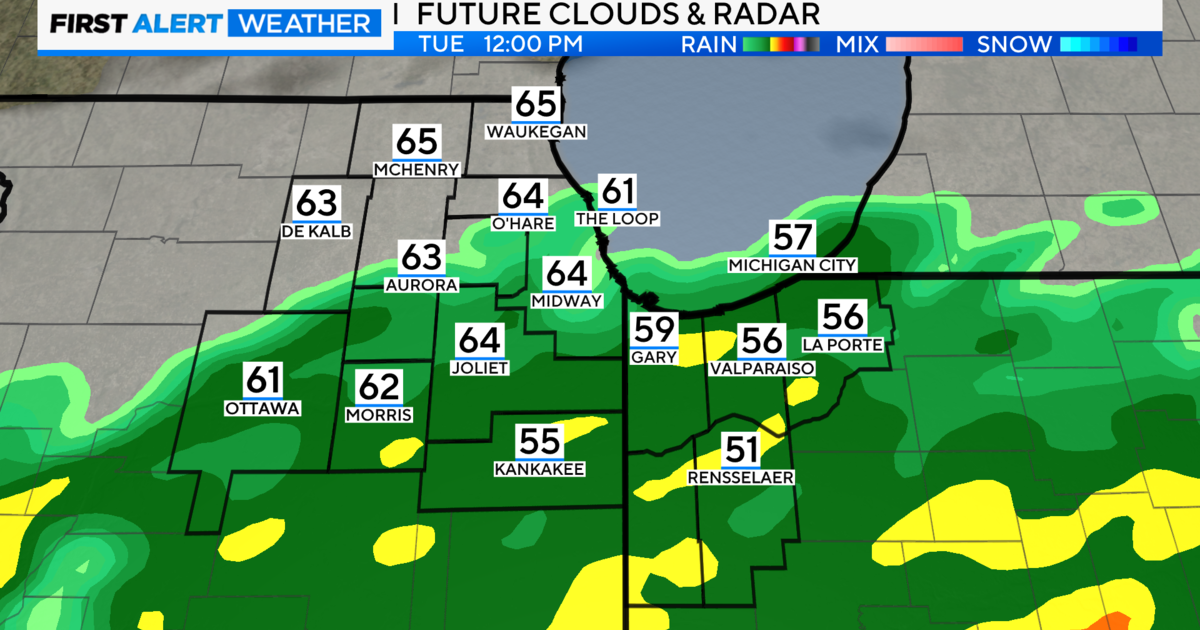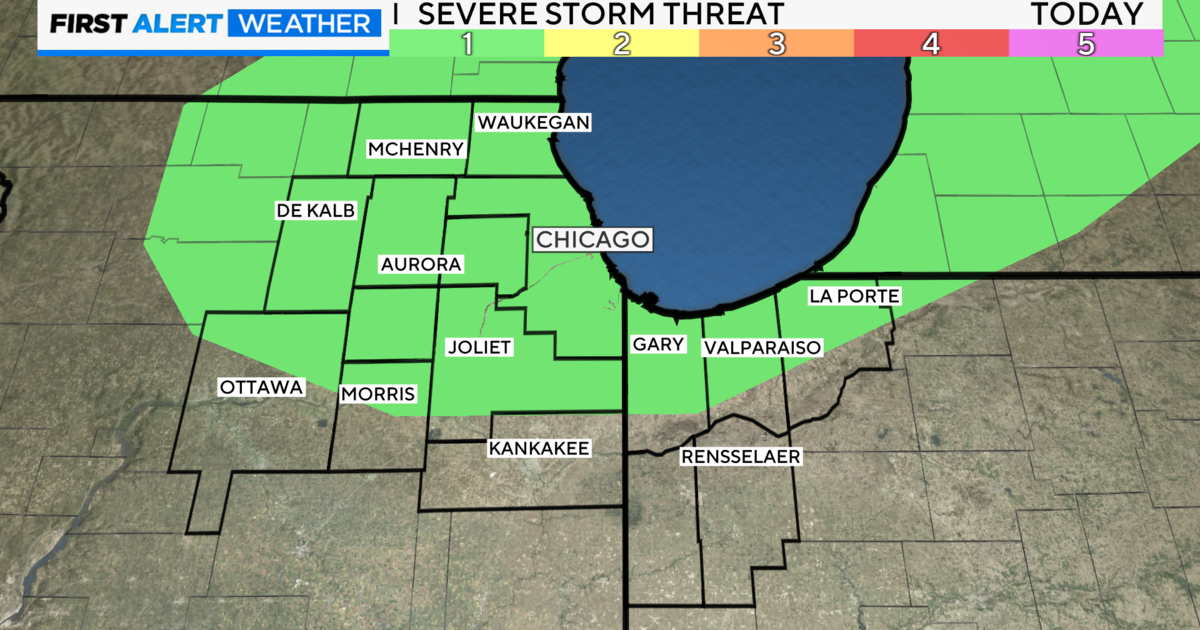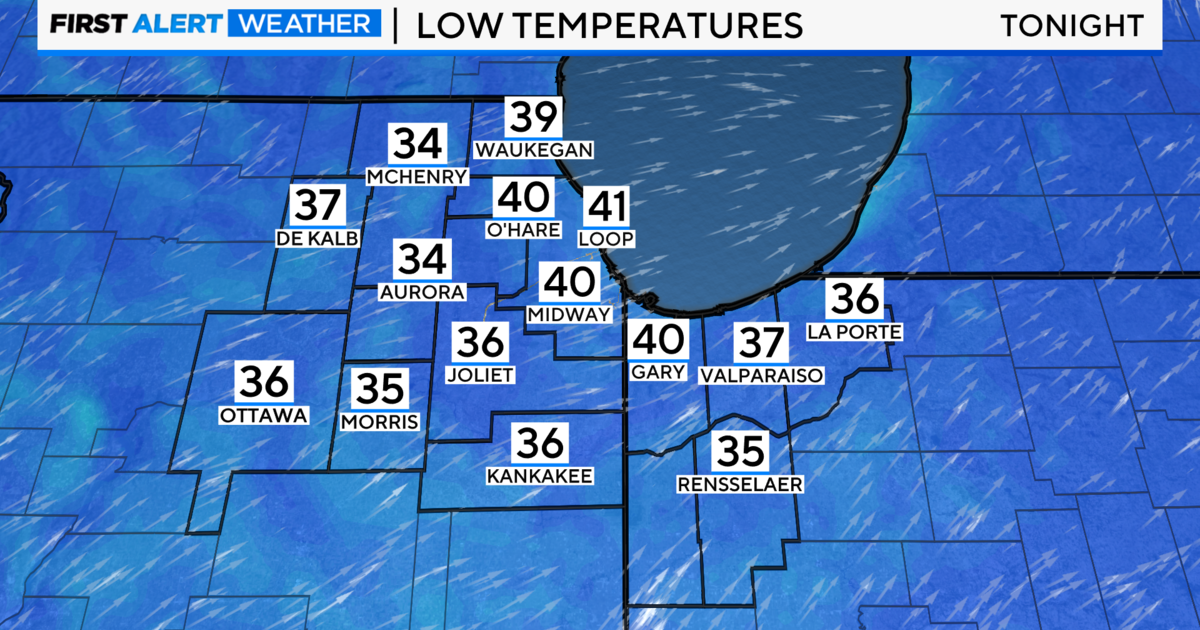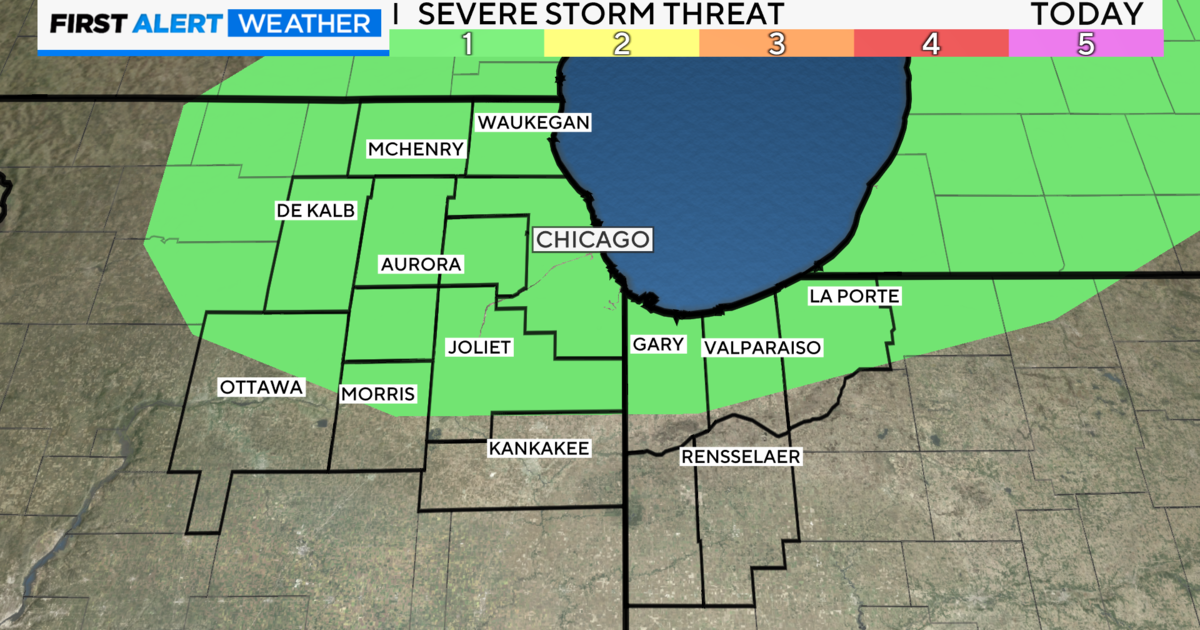Storm To Be Among Worst In 70 Years
For The Latest Updates On This Story, Click Here
UPDATED 10/25/10 8:09 p.m.
'Great Lakes Cyclone' To Strike Chicago Tuesday
CHICAGO (WBBM/CBS) - A combination of strong thunderstorms, followed by violent and destructive winds, will make for one of the Midwest's most dangerous storms in 70 years.
The temperature Monday hit the 70s under partly sunny skies. But when Tuesday morning comes around, the Chicago area will be slammed with furious thunderstorms as a cold front passes over the area.
Damaging winds will likely be a component of the thunderstorms, and there is a risk of tornadoes, CBS 2's Mary Kleist reports.
The severe storms are expected to sweep into the area between 4 a.m. and 9 a.m. Tuesday, coming in the form of a squall line, which often means strong straight-line winds. The storms will be at their heaviest during the Tuesday morning rush.
The rain and severe storms will pass out of the area by midday, but at that point, high and dangerous winds will roar into the area.
The winds will maintain a sustained speed of 35 to 40 mph, and may gust to 55 mph or more. They will be most severe north of Interstate 88, particularly along the Wisconsin border, Kleist said.
Over Lake Michigan, hurricane-force winds are possible.
After sundown Tuesday, the winds will die down a little bit, only to pick up again after sunrise Wednesday morning.
The National Weather Service advises unsecured objects may become airborne. Falling tree limbs and sporadic power outages can be expected. Travel may become difficult with high profile vehicles becoming difficult to control.
Tree limbs and power lines will also be at risk.
The severe weather system is coming in the form of a cyclone, a low-pressure system of closed, spiraling motion. The system is, in fact, being dubbed the "Great Lakes Cyclone."
The low barometric pressure in the system is contributing significantly to the severity of the storm. CBS 2's Megan Glaros says the minimum pressure in the system could drop to an extraordinarily low reading of 960 millibars.
As the storm passes, the temperatures will drop quickly. The forecast high for Thursday is a mere 49 degrees.
Storm To Rank Among The Worst
The National Weather Service reports that based on its records, this will probably be one of the most powerful storm in 70 years, Kleist said.
Still ranking at No. 1, ahead of the storm coming Tuesday, is the Great Ohio Blizzard of Jan. 25-27, 1978. That storm produced winds that gusted up to more than 100 mph, wind chills of -60, and left snow drifts 20 feet high in some areas, according to published reports.
Ohio was the hardest hit in that storm, but the entire Great Lakes region and Ohio Valley were affected. The storm was blamed for more than 70 deaths.
Coming in second is the storm expected to arrive Tuesday.
Ranking third is the Armistice Day Storm of Nov. 11, 1940, which brought a blizzard to much of the Midwest, and a drop from 60-degree temperatures to single-digits in just one day. Up to 26 inches of snow fell in some areas, and the storm was blamed for 144 deaths – many of them duck hunters on the Mississippi River.
Tying for third was the Anniversary Storm of Nov. 10, 1998, which involved winds exceeding 70 mph.
Coming in fourth was the Cyclone of 1913, or the White Hurricane, on Nov. 7-9, 1913. A total of 24 inches of snow fell in some areas, and the blizzard led to the death of more than 250 people and sank 19 ships.
Fifth on the list is the storm on Nov, 10, 1975, which sank the S.S. Edmund Fitzgerald freighter ship in Lake Superior. All 29 crewmembers were killed in the wreck, which inspired a pop song by Gordon Lightfoot.
CBS 2's Mary Kay Kleist and Megan Glaros contributed to this report.



